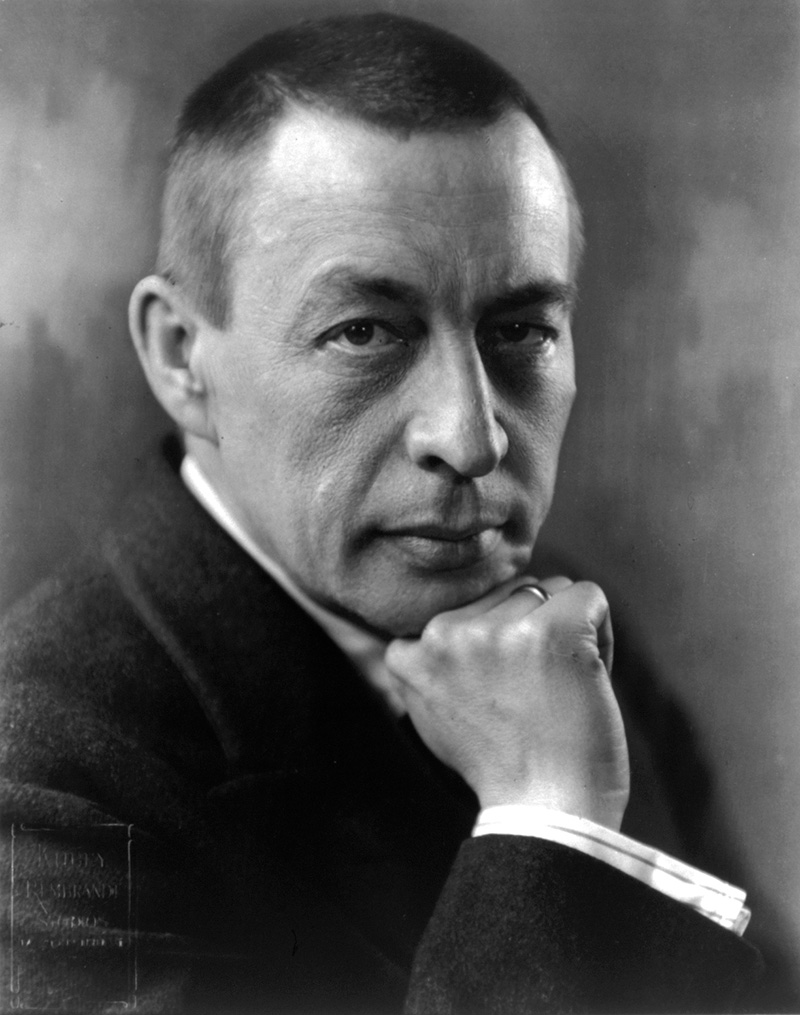Sergei Rachmaninoff

- Born: April 1, 1873, Oneg, near Semyonovo, Russia
- Died: March 28, 1943, Beverly Hills, California
Rhapsody on a Theme of Paganini for Piano and Orchestra, Op. 43
- Composed: 1934
- Premiere: November 7, 1934, Baltimore, Maryland, Leopold Stokowski conducting The Philadelphia Orchestra, Sergei Rachmaninoff, pianist
- Instrumentation: solo piano, 2 flutes, piccolo, 2 oboes, English horn, 2 clarinets, 2 bassoons, 4 horns, 2 trumpets, 3 trombones, tuba, timpani, bass drum, crash cymbals, glockenspiel, snare drum, suspended cymbals, triangle, harp, strings
- CSO notable performances: First Performance: October 1937 with Eugene Goossens conducting and Sergei Rachmaninoff, piano. Most Recent: February 2016 with Giancarlo Guerrero conducting and Conrad Tao, piano. Notable pianists who have performed this work with the CSO include Arthur Rubinstein (1944 & 1951), Leon Fleisher (1959) and Van Cliburn (1970).
- Duration: approx. 24 minutes
What is it in the melody of the 24th violin caprice by Niccolò Paganini (1782–1840) that has made it so irresistible to composers as diverse as Robet Schumann, Franz Liszt, Johannes Brahms, Witold Lutosławski and many more? The answer lies in the theme’s extreme simplicity, which seems to cry out for embellishment in the form of virtuoso variations. The melody moves from its fundamental note to the note a fifth above, then back to the fundamental and back to the fifth again—what could, in fact, be simpler? The number of melodies that can be derived from this elementary gesture is endless. Of course, Paganini himself was the first to realize this when he created a bravura piece based on the theme.
At a time when Rachmaninoff had all but stopped composing (due to his emigration from Russia and his heavy schedule as a concert pianist), Paganini’s caprice provided him with just the impulse he needed. In the 1930s, Rachmaninoff built a villa on Lake Lucerne in Switzerland, which he named “Senar” (after the first letters of SErgei and NAtalia Rachmaninoff). Happy to find a permanent home after so many years of incessant concertizing, he saw his creativity return: the Paganini Rhapsody was immediately followed by the Third Symphony.
The Rhapsody (which Rachmaninoff introduced to Cincinnati in 1937) begins by stating the intervals of a fifth on which the Paganini theme is built. Rachmaninoff’s procedure is similar here to that followed by Beethoven in the last movement of the “Eroica” symphony, where the appearance of the theme is preceded by its “skeleton.” Rachmaninoff then introduces the actual Paganini theme in the orchestra, while the solo piano keeps on playing the “skeleton.” Soon, the piano takes over the melody, and starts ornamenting it right away.
In the first six variations (there will be 24 in all), the vast harmonic potential of the theme is explored, with much pianistic brilliance and exquisite orchestral coloring. Then, a surprise awaits in Variation 7: the Gregorian melody of the Dies irae (“Day of Wrath”) suddenly appears. Rachmaninoff was positively obsessed with this melody, which he quoted in many of his works. But what is this gloomy theme from the Mass of the Dead doing in a sparkling virtuoso composition? We shouldn’t look for a philosophical explanation. If we listen to Variation 7 carefully, we hear the Dies irae melody in the piano while the orchestra plays the Paganini theme. Quite simply, Rachmaninoff discovered that these two melodies “worked” well together contrapuntally, and he wanted to exploit that fortunate discovery. The Dies irae theme dominates the next four variations, bringing into relief what one commentator has called the “sinister” aspects of the theme. (After all, wasn’t Paganini called the “violinist of the Devil” in his own day?)
A new section begins with Variation 11, a dream-like cadenza that serves as a transition to No. 12, an elegant “Tempo di Minuetto.” Until now, the music has been moving in duple meter; as it changes to triple, Rachmaninoff gives the theme a new physiognomy, mixing elements of the minuet, the waltz and the lyrical character piece. Then the tempo speeds up and the next two variations are more dramatic and agitated. Variation 15, marked “Scherzando,” is light and extremely nimble, 16 is graceful and lyrical, while No. 17 is mysterious and intensely chromatic. Musicologist and critic Michael Steinberg wrote about the latter: “It is like making your way, hands along the wall, through a dark cave.” We do find our way out, however, emerging to the sunshine in Variation 18, which has one of Rachmaninoff’s greatest melodies, derived from Paganini by simple inversion: every rising interval in the theme is replaced by a falling one and vice versa.
This slow variation marks the emotional high point of the Rhapsody. What follows is a return to a more basic form of the theme, one in which the original fifths are prominent once again. Having thus reconnected with Paganini, Rachmaninoff heads for the finish line, with a grandiose development in which the initial duple meter returns as a march. The composition ends with a witty final flourish, but not before the Dies irae theme is recalled one last time.
—Peter Laki